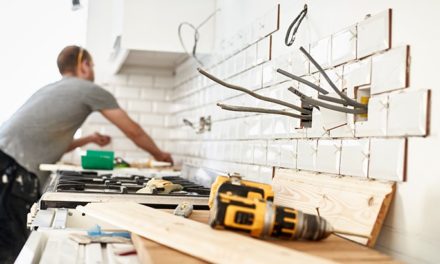STATEN ISLAND, N.Y. — A waterlogged basement can be a homeowner’s worst nightmare. The Staten Island Board of Realtors (SIBOR) wants to help you stay nice and dry all winter. Houselogic guest blogger, Rich Binsacca, recommends the following guide to getting and keeping unwanted water out of your home:
What’s the water source
If your basement smells musty, looks moldy, or sports little puddles after every rain, you’ve got a wet basement problem. Long-term dampness will damage trim and finishes, and erode framing and foundations—problems that would cost thousands to fix. In addition, damp basements promote mold and mildew, which can harm your health.
Moisture in a wet basement comes from three main sources:
- Groundwater: Lives within pockets beneath the earth’s surface; can seep through unsealed concrete slabs, form puddles, or just cause that wet basement feel.
- Precipitation: Rain, snow, sleet, and melted hail that flow into basements under doors or through poorly sealed windows.
- Hydrostatic pressure: Water-soaked soil that pushes moisture through walls and floors and produces a wet basement.
Fix a wet basement’s water woes
The best way to stop water flow into your basement is to solve the root cause. Sometimes the solution is easy, like extending downspouts or grading property so water runs away from your house.
Sometimes it’s harder to fix wet basement problems.
If your wet basement is caused by hydrostatic pressure, excavate around the foundation’s perimeter and install a drainage system and waterproofing membrane. These reduce pressure against the structure and blocks water from seeping through the walls and causing a wet basement. A professional can do the job for $5,000 or more.
If you can’t afford the outside-in water treatment for your wet basement, solve the problem from the inside out. Working from inside your basement, cover all foundation cracks, framing joints, and floors with a brush-on, waterproofing sealant. This DIY project typically costs $1,700 for a 20-by-30-foot basement.
Sump pumps to the rescue
A sump pump, which removes water from a sump pit in the ground, is your best defense against seeping groundwater or minor floods. (If major floods are frequent problems, don’t finish your basement.)
When the sump pit fills, the pump automatically engages and shoots water into drains or other areas that flow away from the house. Professional installation, including wiring to a dedicated circuit, costs $2,000 to $6,000. Always keep a battery-powered, backup pump around ($300) in case the power goes out during a storm.
About The Staten Island Board of REALTORS® (SIBOR)
The Staten Island Board of REALTORS® (SIBOR) is the largest not-for-profit trade association in Staten Island, N.Y.
SIBOR exists to enhance the ability and opportunity of its members to conduct their business successfully and ethically; and to promote the preservation of the public’s right to own, transfer and use real property.
Comprised of over 1,600 members, SIBOR serves real estate agents, brokers and affiliated professionals throughout the borough and surrounding areas.
SIBOR is the provider of the Staten Island Multiple Listing Service Inc. (SIMLS), which works as a clearinghouse through which more than 250 local real estate firms exchange information on properties they have listed for sale. Together, its members participate in over 3,000 real estate transactions every year.
All SIBOR members belong to the New York State Association of REALTORS® (NYSAR) and the National Association of REALTORS® (NAR).
SIBOR may be reached at 718-979-0007 and viewed online at http://siborrealtors.com. SIBOR may also be visited on Facebook at “Staten Island Board of Realtors,” on Twitter via @SIBOR, and on YouTube at the Staten Island Board of Realtors and RelevantPR channels.
Media Contact: Barton Horowitz
Relevant Public Relations, LLC
Headquarters: 718 682 1509
Mobile: 917 715 8761
Email: [email protected]


